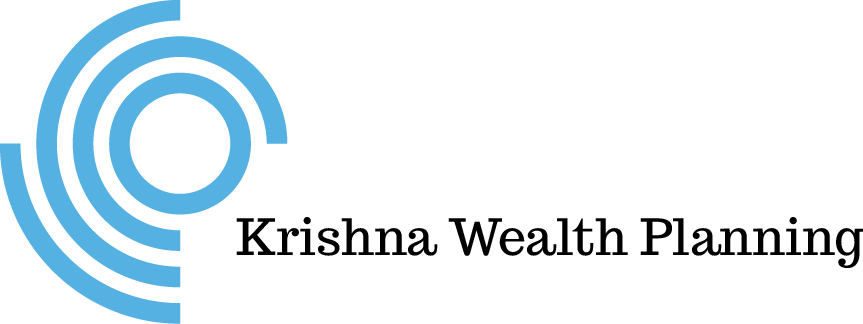6-Minute Read
Life insurance is one of the most robust solutions available for contingency planning. Perhaps it’s not the most fun topic of discussion, but It’s often the first area I’m addressing in a financial plan with clients. Notably in this global pandemic we continue to face, the topic has generated much interest in recent months.
Ultimately life insurance provides protection for your family in the event of your premature death. This piece covers five of the most practical questions I’ve been asked recently about this important area of planning.
One – Is the Process Harder (or Longer) to get Life Insurance during this Pandemic?
A note before diving in: As a fee-only firm, Krishna Wealth planning does not derive compensation from the sale of financial products, including life insurance policies. However, I work closely with experienced professionals to put solutions in place for my clients.
Dan Sullivan, a director at First Element Insurance Planners, recently shared some interesting insights:
- In general, for many younger and healthier individuals, our experience during the pandemic has been that it is more convenient than ever to obtain life insurance with a meaningful death benefit.
- Life insurance carriers have increased maximum death benefit limits on their accelerated “no touch” underwriting programs, which provide an avenue to obtain life insurance without the need for a paramedical exam or collection of medical records.
- For those who are seeking death benefits in exceeding accelerated underwriting limits, carriers in many cases are reviewing medical records but still waiving exam requirements.
- It’s really only individuals over 70, who are in poor health who have had more limitations since the pandemic began.
In general, it’s important to build in adequate time for the full life insurance acquisition process. This includes planning (needs analysis), evaluation of products available, the application process, and medical underwriting. Depending on the carrier you ultimately choose, there can be company-specific delays and procedures to work through.
Two – How Much Life Insurance Do I Really Need?
This one is a timeless question. Without getting into the math, here are three of the most common factors driving the calculation of how much insurance is truly needed.
- Income Replacement – For one or more of your beneficiaries, you want to ensure there’s a large enough capital base available to generate adequate lifetime income. This is especially important if you’re protecting a surviving spouse who has a limited ability or desire to earn income after you’re gone. In determining a need, consider other available income sources such as social security survivor benefits, pensions, and capital already accumulated. But the key here is that replacing income is typically the biggest contributor to how much life insurance is needed.
- Debt Payoff – This sometimes compliments the income replacement above. The most common debts of concern I see are mortgages on primary residences and rental properties along with student loans. But it can encompass any type of substantial debt on your balance sheet.
- Children Support – For those with college-age (or younger) children, providing for a quality education is a common goal. Lump sum amounts needed for college can easily exceed $100,000 (per child) depending on the various factors involved. For those who have children with special needs or disabilities, funding the right kind of trust with life insurance proceeds can also be important.
Now we can go through a full life insurance needs analysis (which I do for clients) but precision is not necessarily the main goal here. If your current health qualifies you for a certain amount of life insurance, obtaining an additional $500,000 or $1 Million in coverage might be quite affordable if we’re assuming the most acquired insurance called term, or limited period coverage.
A starting point could be to arrive at a reasonable estimate for your life insurance needs and then round up. Keep in mind the costs of obtaining life insurance will likely only grow over time. The next few sections go into a few other caveats to consider.
Three – Doesn’t My Need for Life Insurance Decline as I Get Older?
The answer is often yes. That is because several things tend to happen as the years progress. A few examples:
- Asset Growth – With saving and (hopefully) good investing, more assets become available which can be used to reduce, if not eliminate, a need for life insurance.
- Debt Reduction – Most debt people obtain have what’s called standard “amortization”. That means as time goes by, you make fixed payments and your debt balance systematically declines.
- Years of Coverage – With finite lifespans (even with great medical advances), the more years that pass the less dollars of protection is needed.
These among other factors might indicate that less insurance is needed. But it does present a dilemma. When you’re in the market for life insurance, you may need to choose a death benefit coverage level at some fixed dollar amount based on your financial position today.
In the case of term life insurance, one solution is purchasing multiple life insurance policies and staggering them. For example, if you need $2 Million in coverage now and would like to be covered for twenty years, but anticipate that need declining over the years, you could purchase two separate policies.
In the example above, both policies would have a $1 Million death benefit, but the first would have a 20-year term and the second would have a 10-year term. This is one way to save on premiums and still fully meet your current insurance needs. Technical note: If you’re obtaining a solution like this from one carrier, you might end up with one contract with a future “step down” rider to lower the death benefit in the future.
Four – Could My Life Insurance Needs Increase Over Time?
Possibly. There are a few caveats worth pointing out. One, many folks tend to get more conservative with their investment assets as they age. When one spouse passes, the assets available (including life insurance proceeds) are often invested with a more capital preservation approach. This works in opposition to the factors that suggest less life insurance is needed.
Two, even if there are no material changes to your lifestyle or situation, inflation could present a risk. As costs of the goods and services we buy rise higher over time, your purchasing power on a fixed dollar amount of life insurance can decline. Normally inflation would be factored into the calculation noted in Section Two above. But if living expenses over time rise faster than you expect, you could use life insurance to partially hedge that risk.
Finally, while we won’t get into the details here, you might be a candidate for permanent insurance (e.g. whole, universal). There may be several reasons to go this route, but a few include:
- Estate Planning – You project to have a large estate at death. The use of permanent life insurance (if structured properly) could help reduce estate tax liability.
- Business Owner – You need to protect the value of a closely held business.
- Tax Strategies – You’re already fully funding tax-deferred retirement accounts and you’re looking for alternative solutions that may be more flexible for tax purposes.
Five – What if I Have Life Insurance as an Employee Benefit through Work?
Group life insurance is often a benefit provided to employees by larger employers. Some coverage may be provided at no additional cost. But you may be able to purchase additional coverage at a reasonably attractive premium that gets deducted from your paycheck.
If you have health issues, obtaining life insurance this way might be your most effective solution. You could avoid medical underwriting which might make acquiring private life insurance more expensive if not outright impractical.
That said, a couple points of caution:
- Check for Portability – Your life insurance policy obtained through work may not be portable. If the policy ends when you terminate employment, that should factor into the decision. Even if you intend to stay with a company for a long time, that may not be fully under your control. Also, even if you’re allowed to convert your work policy into an individually owned one, there may be certain conditions to meet or you may face a large premium increase.
- Know the Type of Coverage you Have – Some coverage through work may be simple and pay out a death benefit to your beneficiaries regardless of how you die. But other types, such as Accidental Death and Dismemberment (AD&D) only pay out if an accident is the cause of death. Such a policy wouldn’t pay out if illness or disease was the cause of death.
In the end, a strong case can be made for obtaining life insurance that is independent from the insurance your company provides.
Life insurance can be an important component of a well-integrated financial plan and risk management strategy. You might also check out this recent piece on the considerations of health insurance. Hopefully, this piece contained some helpful perspective if you’re starting to build or improve your life insurance plan.
If you have comments or questions on this piece, please drop me a line at: [email protected]
References
- https://www.napfa.org/financial-planning/what-is-fee-only-advising
- https://firstelementinsurance.com/
- https://krishnawealth.com/navigating-your-health-insurance-options-if-you-retire-early/
The information on this site is provided “AS IS” and without warranties of any kind either express or implied. To the fullest extent permissible pursuant to applicable laws, Krishna Wealth Planning LLC (referred to as “KWP”) disclaims all warranties, express or implied, including, but not limited to, implied warranties of merchantability, non-infringement, and suitability for a particular purpose.
KWP does not warrant that the information will be free from error. None of the information provided on this website is intended as investment, tax, accounting or legal advice, as an offer or solicitation of an offer to buy or sell, or as an endorsement of any company, security, fund, or other securities or non-securities offering. The information should not be relied upon for purposes of transacting securities or other investments. Your use of the information is at your sole risk. Under no circumstances shall KWP be liable for any direct, indirect, special or consequential damages that result from the use of, or the inability to use, the materials in this site, even if KWP or a KWP authorized representative has been advised of the possibility of such damages.
In no event shall KWP have any liability to you for damages, losses, and causes of action for accessing this site. Information on this website should not be considered a solicitation to buy, an offer to sell, or a recommendation of any security in any jurisdiction where such offer, solicitation, or recommendation would be unlawful or unauthorized.





